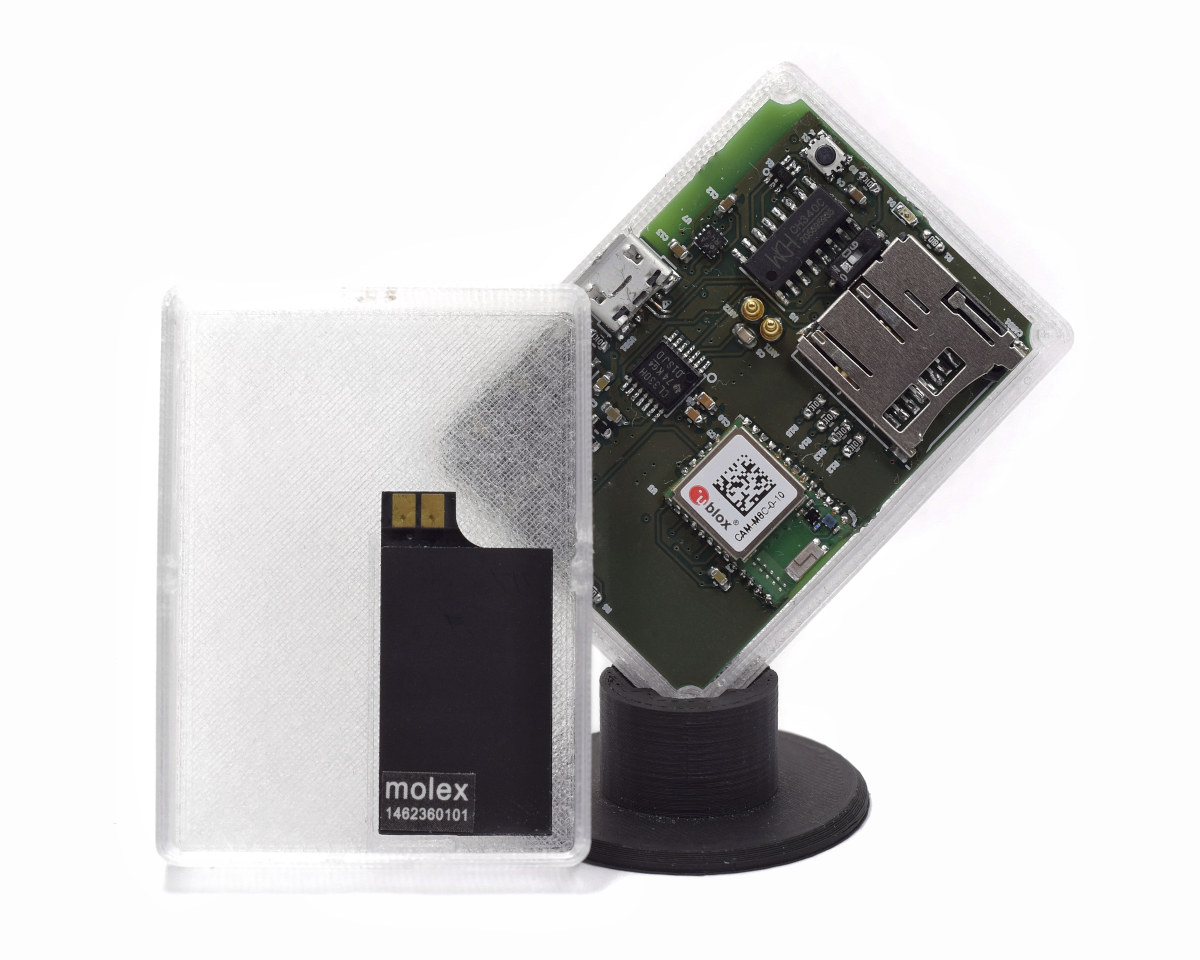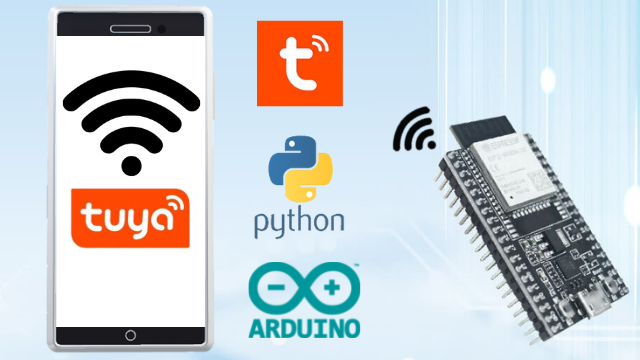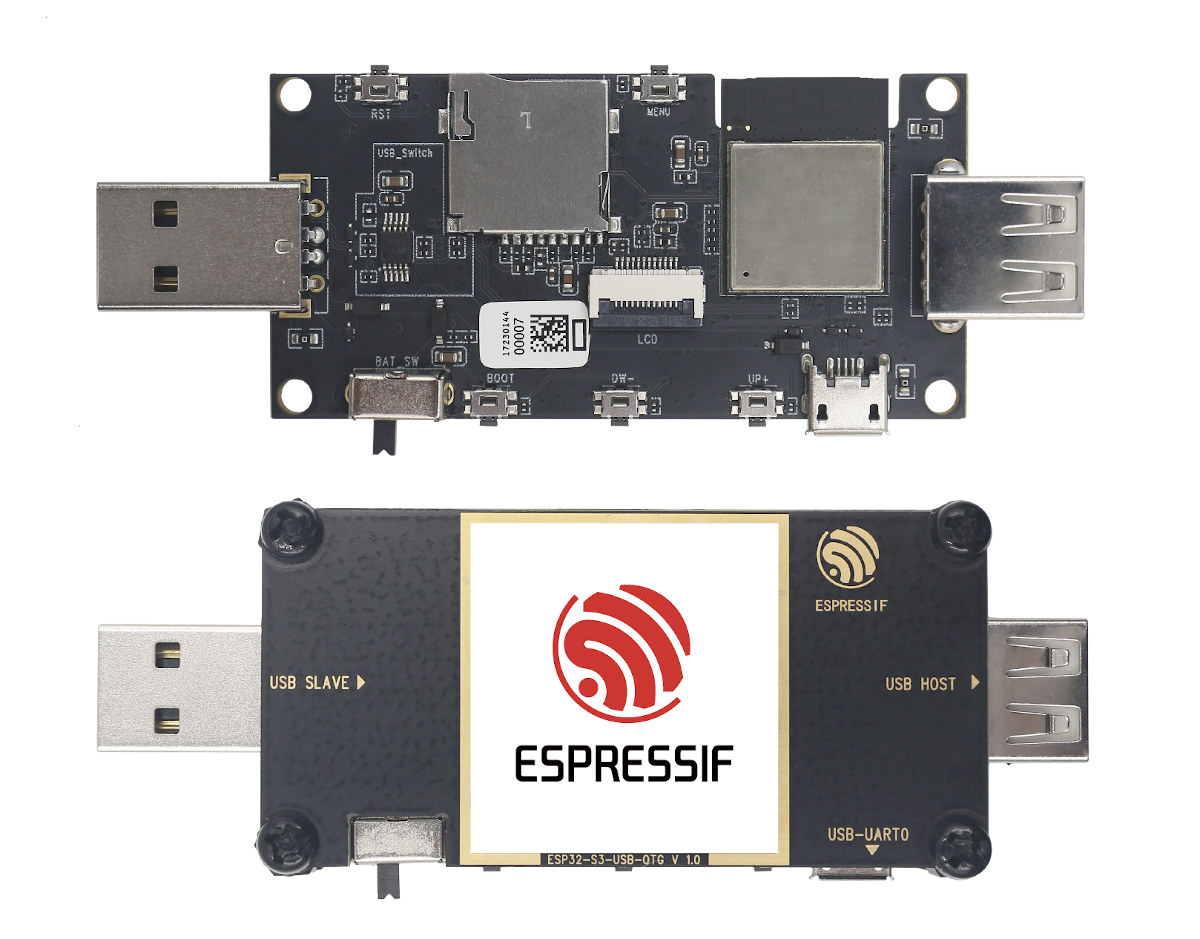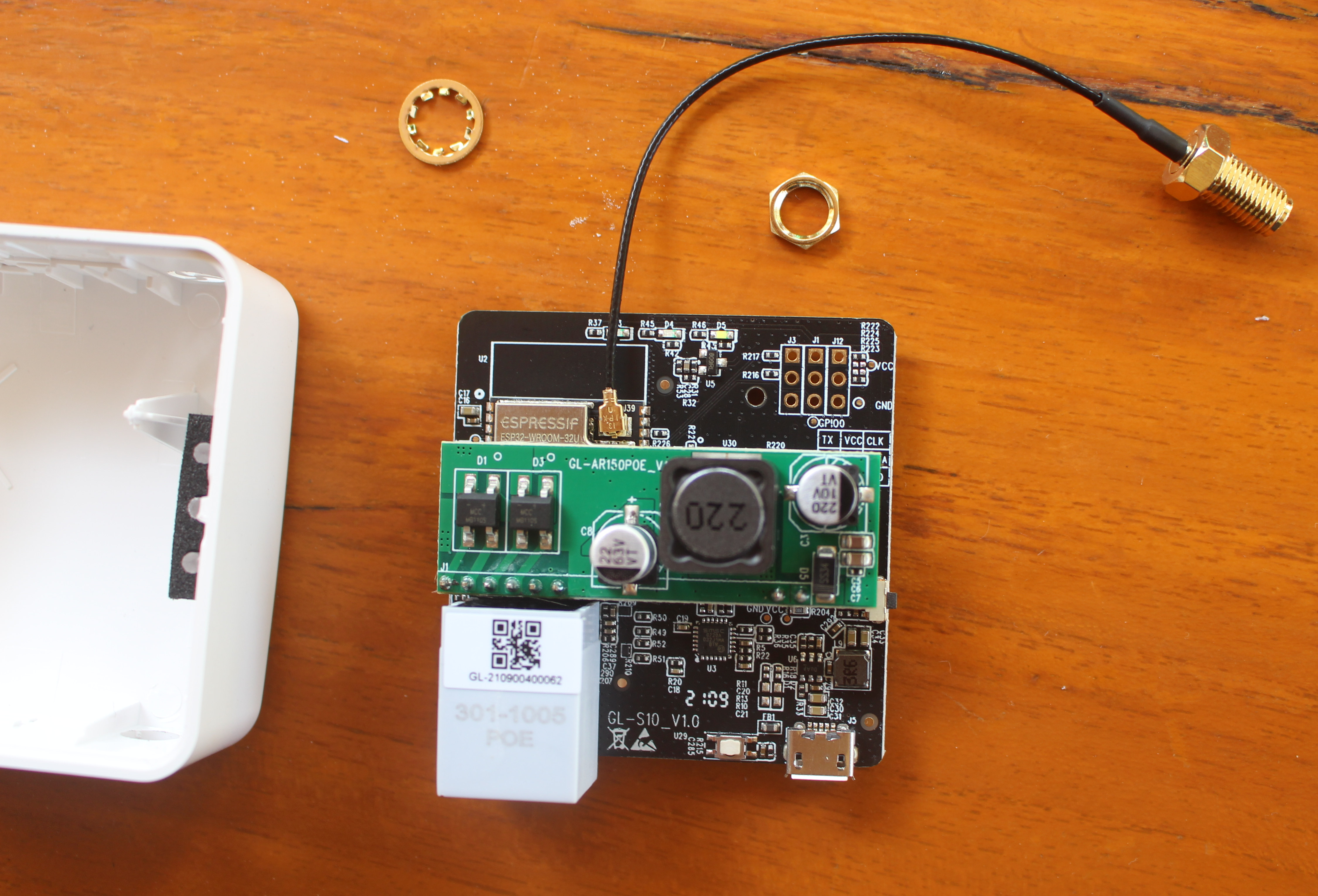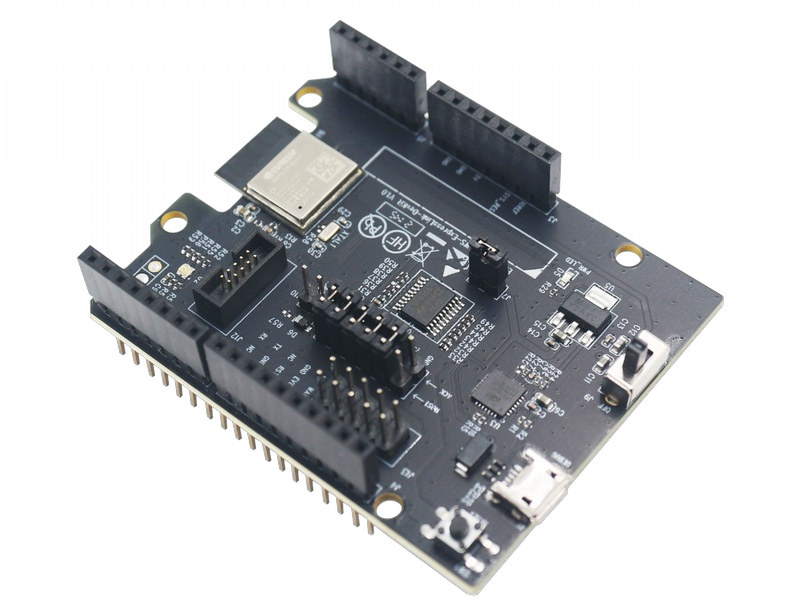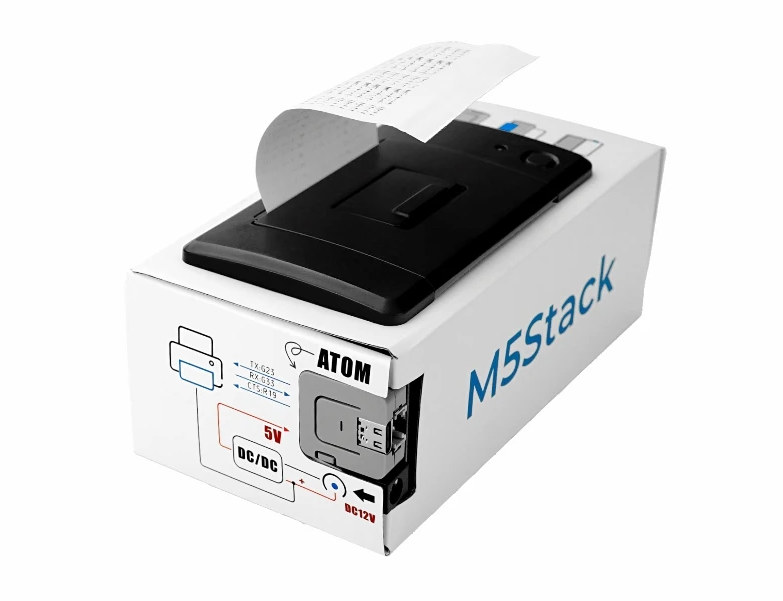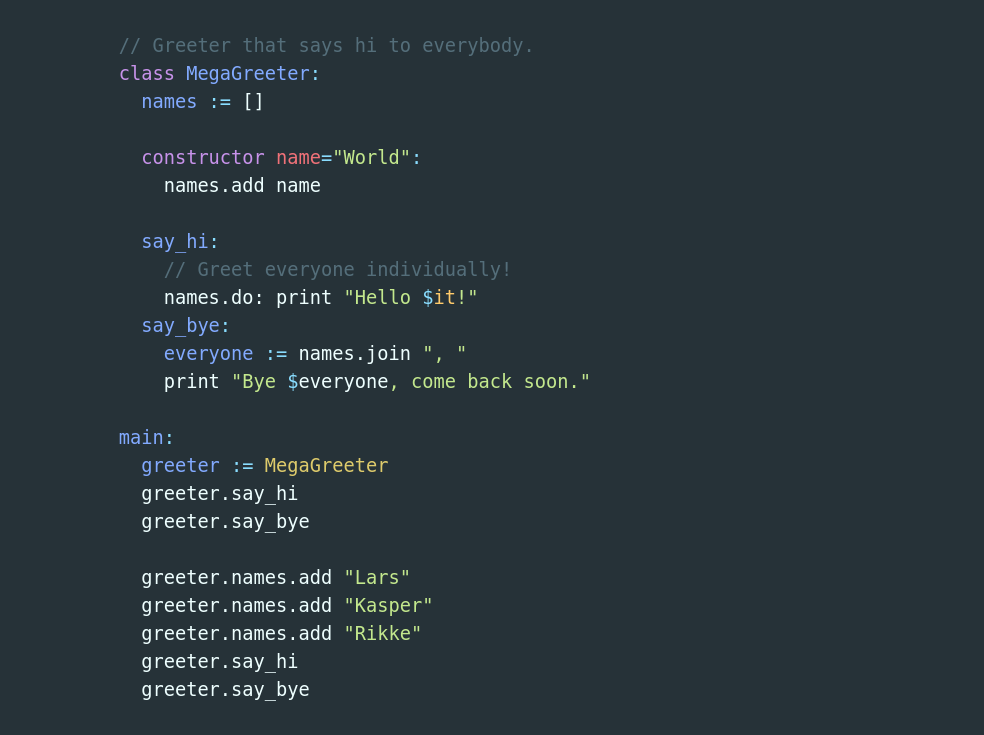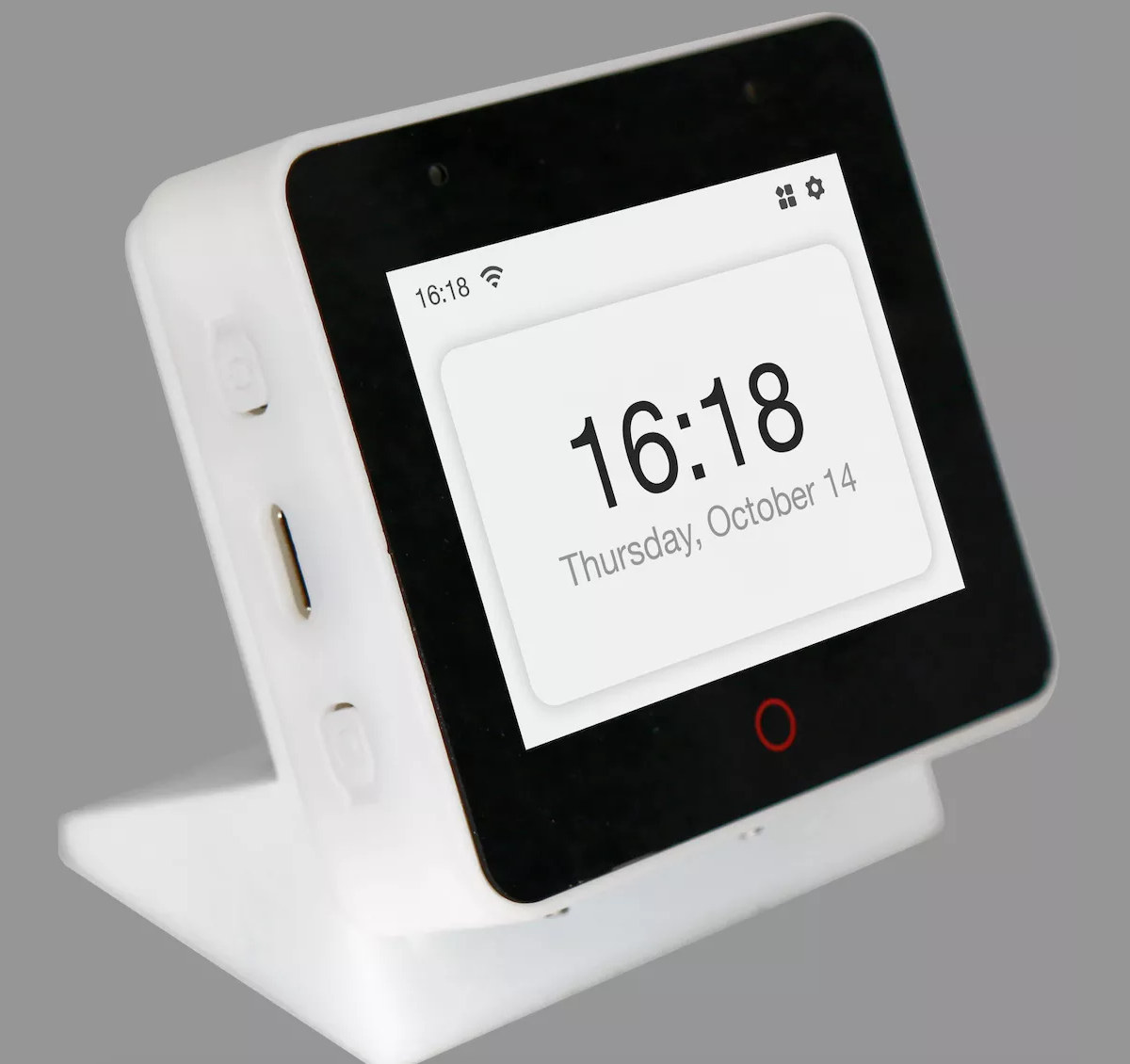Unsurv offline is a compact and lightweight board with ESP32 WiSoC, a GNSS receiver, an accelerometer, and NFC capabilities to help developers/users collect and analyze location data in a privacy-friendly way. Unsurv Technologies initially developed the board to better understand offline video surveillance with OpenStreetMap (OSM) data. It does so by using a database of camera locations from the OSM on the SD card, “counts” surveillance cameras as you walk past them, and you can then transmit data via NFC and visualize it on your smartphone. The accelerometer is used to wake up the board from deep sleep upon detection of motion. The company has now made the board open-source and other applications are also possible. Unsurv offline specifications: Wireless modules TTGO T-micro32 WiFi 4 and Bluetooth 4.2 module based on ESP32-PICO-D4 SiP with dual-core ESP32 processor, 4MB FLASH, ceramic antenna U-blox CAM-M8C (aka u-blox M8) module with concurrent reception […]
Blink an LED on ESP32 board with Tuya Link SDK
Tuya is an All-in-one IoT Platform that enables the user to build smart IoT solutions by connecting devices efficiently, securely, and reliably. This is a getting started article to set up the Tuya platform with the Espressif’s ESP32 boards via tuya link SDK. Further, we use it to control an LED through an Android device. When the switch in the Tuya Smart App is turned ON, the LED connected to the ESP32 board glows and vice versa. Prerequisites Hardware: ESP32 board LED with suitable ballast resistor Breadboard, micro-USB cable, and connecting wires Software: Tuya Account: Tuya IoT Platform (Web) Tuya Account: Tuya Smart Application (Android) Python 3.x Arduino IDE GitHub Link: https://github.com/JayeshRajam/Tuya-ledapp.git Hardware Connections for Tuya Link SDK The ESP32 board is placed on a breadboard. The positive terminal of the LED is connected to digital pin 5 of the ESP32 board and the negative terminal is connected to the […]
Develop USB Host and Device applications with ESP32-S3-USB-OTG board
ESP32-S series chips like ESP32-S2 and ESP32-S3 come with a USB OTG interface, and Espressif unveiled the ESP32-S3-USB-OTG board last September in a post entitled “ESP-USB: Espressif’s Wireless Communication Solution“, where they mostly focused on USB code samples with documentation in Chinese only and provided few details about the board itself. But I browsed the company’s official Aliexpress store earlier this week, and I noticed ESP32-S3-USB-OTG board was up for sale for $35 plus shipping, with additional information now available, so let’s have a closer look. ESP32-S3-USB-OTG board specifications: Wireless module – ESP32-S3-MINI-1-N8 module with ESP32-S3 dual-core Xtensa LX7 processor with WiFi 4 and Bluetooth 5.0 connectivity, 8MB QSPI flash Storage – MicroSD card socket Display – 1.3-inch color LCD USB 1x Full-speed USB host port 1x Full-speed USB slave port 1x Micro USB port for debugging (UART console) Expansion – 14 pads with 6x GPIO, JTAG, 3.3V and GND […]
Review of an ESP32-based BLE to MQTT gateway – Part 1: GL.inet GL-S10 unboxing and teardown
GL.inet introduced the GL-S10 BLE to MQTT IoT gateway last month with an ESP32 module offering WiFi and Bluetooth connectivity, as well as Ethernet and PoE support. I got offered a sample for review, and just received it together with the optional BLE beacon. So today, I’ll first have a look at the content, and check out the hardware with a teardown. GL.inet GL-S10 unboxing The package shows us the main features with Bluetooth LE 4.2, WiFi, PoE, and external antenna, with GL-S10 described as a BLE IOT GATEWAY connecting IoT devices to the Cloud. The gateway ships with a getting started guide, an antenna, a USB cable for power, as well as the beacon which we can see with a 3M stick tape. On one side, we have the RJ45 connector for Ethernet and a micro USB port for power, while the other side features a reset button, plus […]
ESP32-C3 AWS IoT ExpressLink module & devkit aim to ease connection to AWS IoT services
Amazon and Espressif have launched another wireless module with the ESP32-C3 AWS IoT ExpressLink module together with a development kit supporting out-of-the-box AWS IoT connectivity, following their earlier collaboration with the launch of the ESP32-PICO-V3-ZERO Alexa Connect Kit Module last summer. Also called the “ESP32-C3-MINI-1-N4-A”, the ESP32-C3 AWS IoT ExpressLink module implements the AWS IoT ExpressLink specification and provides AWS IoT Core connectivity to a host MCU via AT commands over a UART interface. Pre-provisioned and pre-programmed with ease integration the module supports WiFi configuration, messaging, OTA, and device management. The compact (16.6 x 13.2mm) ESP32-C3 module is currently offered as part of the ESP32-C3-AWS-ExpressLink-DevKit development board following the Arduino Zero board form factor allowing it to be plugged into the Arduino board, or easily connect to other host systems such as the Raspberry Pi. The goal is to simplify the deployment of IoT solutions removing the need for […]
Wireless thermal printer kit features M5Stack ATOM Lite controller
The M5Stack ATOM thermal printer kit is a desktop DIY thermal printer comprised of the company’s ATOM Lite IoT controller equipped with ESP32-Pico-D4 system-in-package and a 58mm thermal printer housed in a cardboard package. The printer can print text, graphics, barcodes, or QR code printings, and the pre-installed firmware offers two modes of operation with “AP Connect Print” where the printer is seen as an access point and can be controlled with a smartphone or computer from a web browser, and the “MQTT Notifications” mode that prints the content of MQTT messages. Highlights of the ATOM thermal printer kit: M5Stack ATOM Lite IoT controller with ESP32-Pico-D4 WiFi and Bluetooth SiP fitted with 4MB Flash 58mm thermal printer connected over UART (9600 bps 8N1) Supports for text/graphics/BarCode/QRCode Speed – 60mm/s 203dpi 8 dots/mm up to 384 dots per line Connectivity over WiFi AP hotspot connection, web-controlled printing Printing content sent via […]
Toit open-source language claims to be 30x faster than MicroPython on ESP32
Developed by a team of former Google employees, Toit is a complete IoT platform with remote management, firmware updates for fleets of devices with features similar to the one offered by solutions such as balena, Microsoft Azure, or Particle edge-to-cloud platform. Toit currently works on ESP32 microcontrollers using lightweight containers, and after seeing existing high-level languages MicroPython and Javascript were not fast enough on low-end microcontrollers platforms, the team at Toit started to develop the Toit language in 2018, and has just made it open-source with the release of the compiler, virtual machine, and standard libraries on Github under an LGPL-2.1 license. One of the main reasons to switch from MicroPython to the Toit language is if your application is limited by performance or you operate ESP32 from a battery, as Toit claims up to 30x faster performance with Toit on ESP32: We went into crunch mode and some months […]
Espressif introduces ESP32-S3-BOX AI development kit for online and offline voice applications
Espressif Systems has very recently introduced the ESP32-S3-BOX AI voice devkit designed for the development of applications with offline and online voice assistants, and whose design I find similar to the M5Stack Core2 devkit, but the applications will be different. The ESP32-S3-BOX features the latest ESP32-S3 processor with WiFi and BLE connectivity, AI capabilities, as well as a 2.4-inch capacitive touchscreen display, a 2-mic microphone array, a speaker, and I/O connectors with everything housed in a plastic enclosure with a stand. ESP32-S3-BOX specifications: WiSoC – ESP32-S3 dual-core Tensilica LX7 up to 240 MHz with Wi-Fi & Bluetooth 5, AI instructions, 512KB SRAM Memory and Storage – 8MB octal PSRAM and 16MB QSPI flash Display – 2.4-inch capacitive touchscreen display with 320×240 resolution Audio – Dual microphone, speaker USB – 1x USB Type-C port for power and debugging (JTAG/serial) Expansion – 2x Pmod-compatible headers for up to 16x GPIOs Misc Power […]


